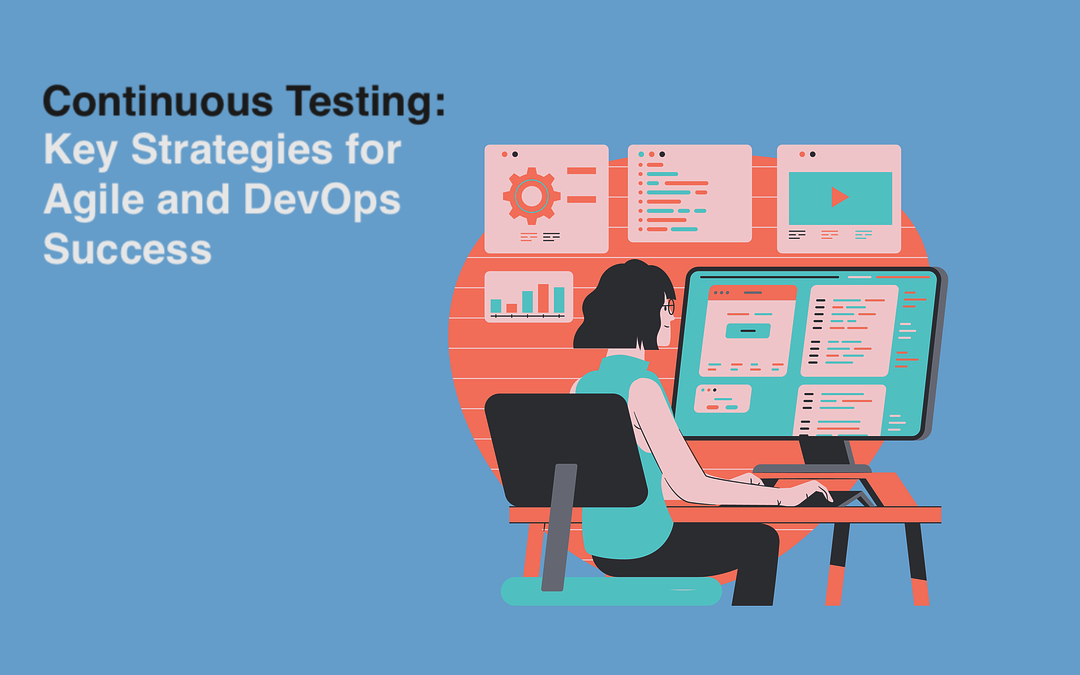
In the fast-paced realms of software development, particularly within Agile and DevOps practices, Continuous Testing (CT) has emerged as a cornerstone strategy. It ensures that software quality is maintained despite rapid and frequent changes. CT involves the automatic and ongoing execution of tests during all stages of the software development life cycle, providing immediate feedback on the business risks associated with a software release at any point in time. This article delves into how Continuous Testing integrates seamlessly with Agile and DevOps, explaining its importance and providing insights on implementation.
The Role of Continuous Testing in Agile
Agile methodology is built on fast delivery, flexibility, and iterative progress principles. Continuous Testing aligns perfectly with these principles by providing rapid feedback on the impact of changes, allowing teams to address issues immediately. In Agile environments, where software iterations are frequent and incremental, CT helps ensure that new features are tested as they are developed, supporting continuous improvement and helping to maintain a steady pace of delivery without compromising on quality.
The Role of Continuous Testing in DevOps
DevOps practices aim to unify software development (Dev) and software operation (Ops) activities to streamline software delivery. Automation is a key component of DevOps, facilitating continuous integration and continuous deployment (CI/CD). Continuous Testing in DevOps accelerates these processes and enhances collaboration across teams by making testing results available to everyone involved. By embedding CT into the DevOps pipeline, organizations can achieve faster release cycles and higher deployment rates, while ensuring that each release meets quality standards.
Key Components of Continuous Testing
Test Automation
Automating the execution of tests is fundamental to Continuous Testing. Effective test automation covers everything from unit tests to integration and UI tests, ensuring broad and deep coverage across the application.
Integration with CI/CD Pipelines
Continuous testing must be integrated into the CI/CD pipeline to trigger tests upon code commits and automatically automate deployments. This integration ensures that testing is a seamless part of the development process rather than a separate activity.
Real-time Monitoring and Analytics
Monitoring test results in real-time and analyzing trends over time are crucial for understanding the health of the software product. This enables teams to make informed decisions about whether a software version is ready for the next stage of deployment.
Test Data Management
Managing test data effectively ensures that tests are both reliable and repeatable. It involves creating, maintaining, and provisioning sanitized test data that mimics real-world scenarios without breaching data security or compliance requirements.
Environment Provisioning
Providing stable and consistent environments for testing is essential. This includes managing virtual environments that can be spun up and torn down as needed to support testing activities without delays.
Challenges of Implementing Continuous Testing
Implementing CT involves several challenges. These include integrating CT into legacy systems, balancing the need for speed with the requirement for thorough testing, dealing with unstable test environments, and ensuring that test data is useful and compliant with privacy regulations.
Best Practices for Continuous Testing
Successful Continuous Testing requires a robust strategy. This strategy should prioritize test cases based on risk and impact, employ AI and machine learning to optimize test processes, and maintain a collaborative approach between development, QA, and operations teams. Regular test suite updates and maintenance are also critical to keep up with changing application features and requirements.
Tools and Technologies for Continuous Testing
Various tools support Continuous Testing, including Selenium for web automation, Jenkins for integration, and testRigor for end-to-end test management. Each tool offers unique features that cater to different testing needs and organizational environments. If you want to learn more about testing tools, you should check out this QA blog.
Conclusion
Embracing Continuous Testing within Agile and DevOps practices is essential for organizations aiming to enhance the efficiency and quality of their software delivery processes. By continuously testing software from the initial stages of development through to deployment, companies can ensure that they are fast and reliable in their software delivery.
Share this post
Leave a comment
All comments are moderated. Spammy and bot submitted comments are deleted. Please submit the comments that are helpful to others, and we'll approve your comments. A comment that includes outbound link will only be approved if the content is relevant to the topic, and has some value to our readers.




Comments (0)
No comment